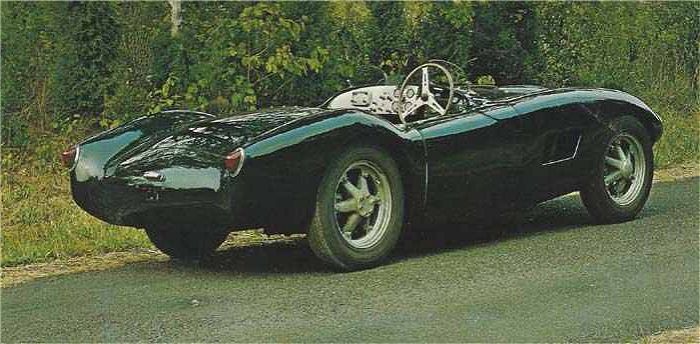Description
The HRG Twin Cam was the last and most technically ambitious car ever developed by the small British manufacturer HRG Engineering Company. Conceived in the late 1940s as a high-performance evolution of the proven 1500 model, it featured a new twin-overhead-camshaft engine designed in collaboration with Albert Gough and employed advanced engineering for its day. Though only one prototype was completed, the HRG Twin Cam represented the company’s boldest attempt to move beyond its modest, handmade sports cars and enter the realm of genuine high-performance engineering.
The story of the HRG Twin Cam began in 1947, when HRG sought to build a more powerful and competitive engine to replace the single-cam Singer unit that powered its successful 1500 and Le Mans Lightweight models. The idea was to create a compact but sophisticated twin-cam head to give the marque a technological edge in both racing and road performance. This new powerplant would maintain HRG’s reputation for simplicity and reliability while delivering higher revs, greater power, and a more refined performance curve.
The engine chosen as the foundation for the project was the Singer 1.5-litre four-cylinder block, which HRG engineers already knew intimately. The lower end of the unit remained largely standard, but the cast-iron cylinder head was replaced by a bespoke aluminium twin-overhead-camshaft head. The new head was designed by Albert Gough—an experienced engineer who had previously worked with Frazer Nash and GN—and was fitted with hemispherical combustion chambers and inclined valves, features that were advanced for the time. Twin overhead camshafts were driven by a vertical shaft from the front of the engine, and the system allowed for improved breathing and higher rotational speeds compared to the earlier single-cam design.
With twin SU carburettors and a free-flow exhaust system, the 1,497 cc engine developed around 90 horsepower—substantially more than the 70–75 horsepower of the standard HRG 1500. This output, combined with the car’s light weight of approximately 650 kilograms, would have made it one of the quickest 1.5-litre sports cars in Britain had it entered production. Power was sent to the rear wheels through the familiar HRG four-speed manual gearbox, and the car retained the marque’s proven tubular steel chassis with independent front suspension and a live rear axle on semi-elliptic springs.
The Twin Cam prototype was bodied as a compact two-seat sports car, following the company’s established formula of a long bonnet, open cockpit, and short tail. The design was simple and functional, made from hand-formed aluminium panels over a lightweight frame. The car’s stance was low and purposeful, its proportions beautifully balanced, and while it lacked the enclosed streamlining of the Aerodynamic or Le Mans Lightweight, it had an unmistakable purity of line. The cockpit was sparse but purposeful, with only essential instruments and no concessions to luxury—a continuation of HRG’s minimalist, driver-focused ethos.
On the road and track, the HRG Twin Cam proved extremely promising. Early testing showed excellent throttle response, lively acceleration, and a notably higher rev range than the earlier Singer-powered cars. The handling remained sharp and predictable, thanks to HRG’s well-developed chassis, and the braking and steering—already considered among the best of any small sports car of the time—were unaffected by the added performance. Engineers believed that with refinement, the car could have competed successfully against the likes of MG’s XPAG-powered racers or even early Jaguar XK120s in its displacement class.
Unfortunately, the Twin Cam project arrived at a difficult moment for HRG. The small company was struggling financially in the austere postwar years, and the cost of developing the complex new engine was far beyond what the firm could sustain. The prototype remained unique, and the planned small-scale production run never materialized. By the early 1950s, HRG had ceased building complete cars altogether, focusing instead on engineering consultancy work and subcontracting for other manufacturers.
The sole HRG Twin Cam survived and remains one of the most historically important of all HRG creations. It represents the company’s final effort to innovate technically and a fascinating “what-if” in British automotive history—had HRG possessed the resources to put the car into production, it might have secured a lasting place among the premier sports car marques of the 1950s.
Today, the HRG Twin Cam is treasured by enthusiasts as a unique and irreplaceable artifact of British motoring ingenuity. It stands as a testament to the craftsmanship, imagination, and engineering skill of a small team working in the finest tradition of the independent sports car builder. Combining the charm of HRG’s prewar simplicity with a bold leap toward modern performance design, the Twin Cam remains a fitting final chapter in the story of one of Britain’s most respected and enduringly admired small manufacturers.

